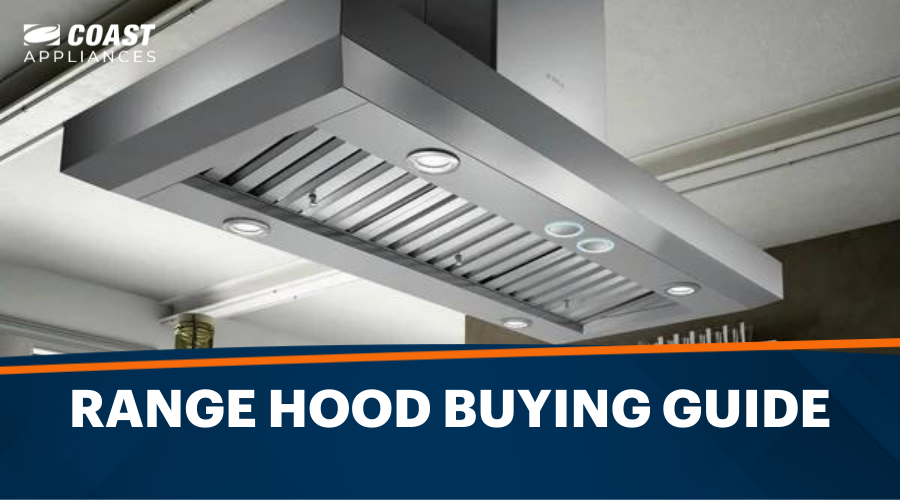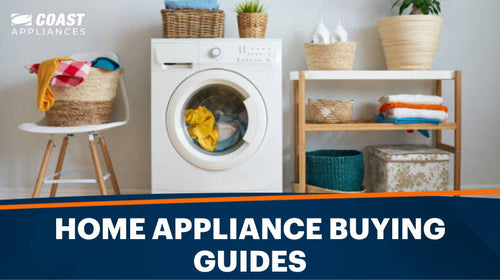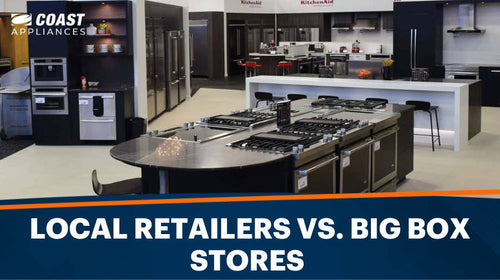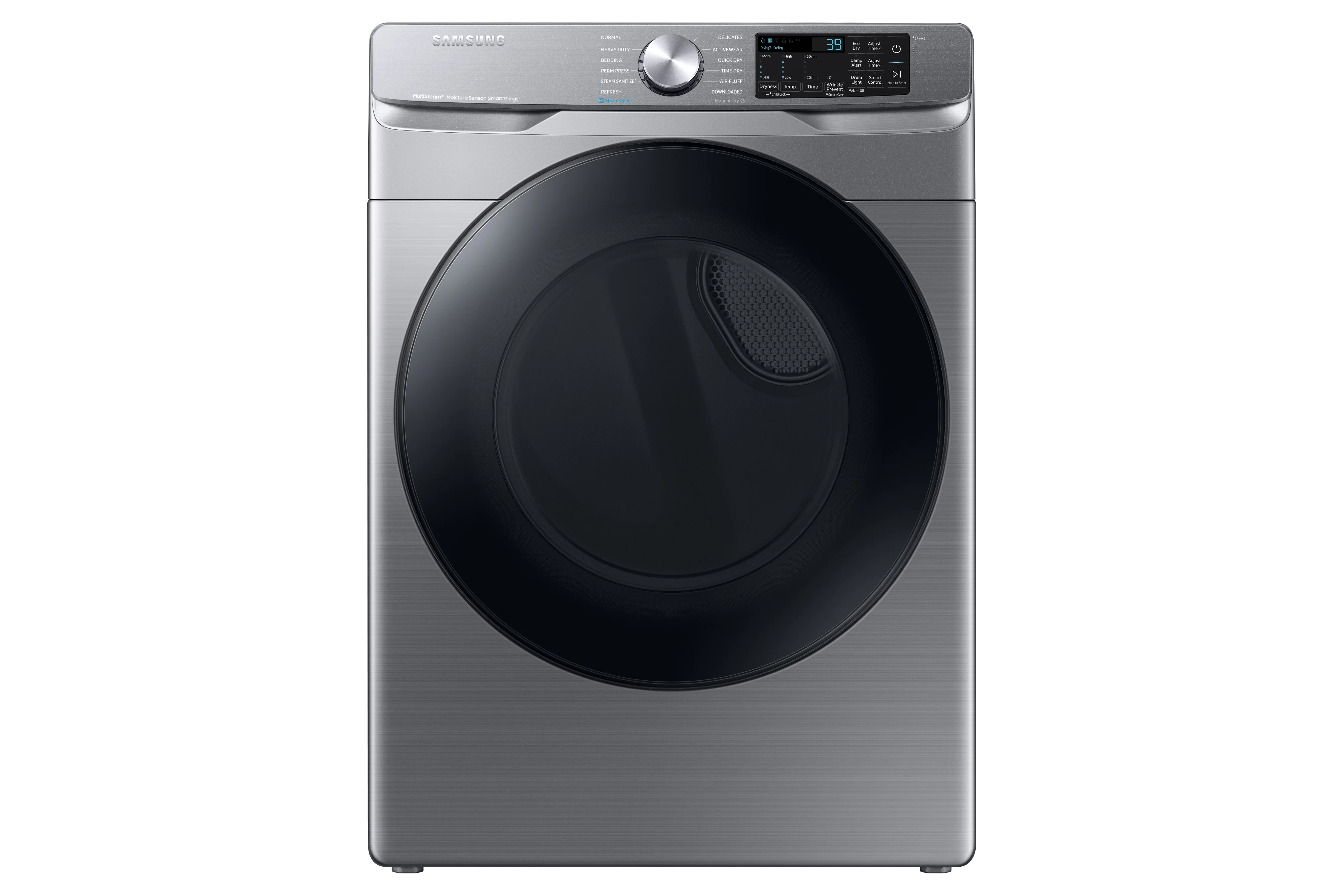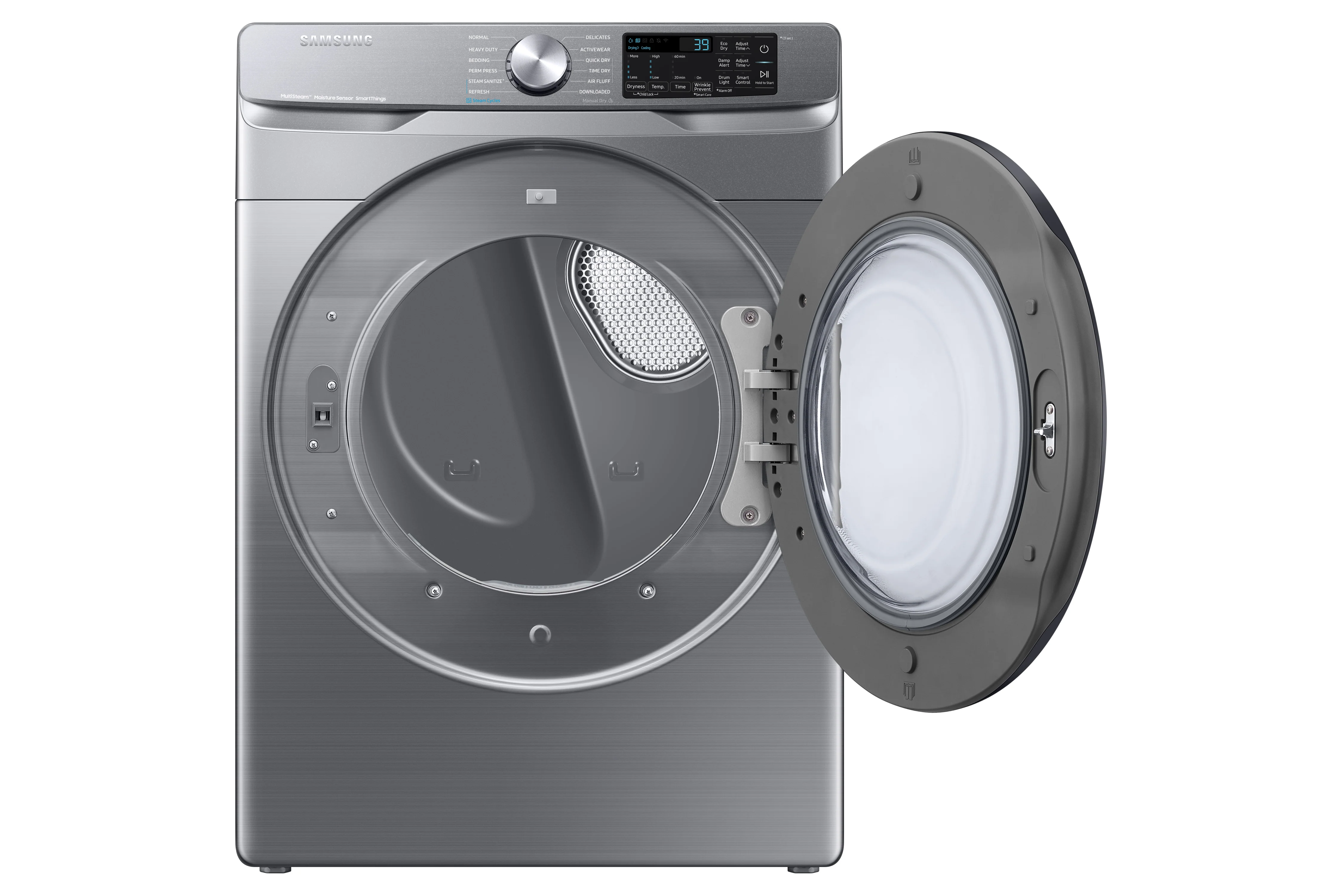Types of Range Hoods
Range hoods come in a wide variety of designs and styles, but nearly all range hoods fall into one of five categories. Whether you're looking for the quietest range hood or the best ductless range hood, learning more about these categories can help you find the right range hood for your kitchen.
Wall Mount & Chimney Range Hoods
These range hoods are secured directly to a wall in your kitchen. They can be an excellent option if you have space between your cabinets where the range hood can be mounted. Wall-mount range hoods are one of the most popular range hoods on the market and come in many styles.
Pros:
- They're incredibly efficient at removing smoke and odors from kitchens
- You can find all kinds of options at many price points
- They're an excellent option for kitchens without many windows
Cons:
- A wall-mount hood will prevent you from being able to install cabinets over your cooking range
Under-Cabinet Mount Range Hoods
These range hoods have a small, compact design, which allows them to be hung directly beneath your cabinets. Both ducted and ductless under-cabinet range hoods are available.
Pros:
- They don't take up much kitchen space
- There are ducted and ductless options
- They're a fantastic choice for small and medium-sized kitchens
Cons:
- You can only install a ducted range hood if your kitchen has access to ducts
- Ductless under-cabinet range hoods need regular cleaning
Island Range Hoods
If your cooking unit is located on your kitchen island, you'll need an island range hood. They hang from your ceiling, right over your cooktop. Not only are these range hoods functional, but they can also enhance the appearance of your kitchen.
Pros:
- They can add value to your home
- They're the only option for kitchens with island cooking units
Cons:
- To install an island range hood, you'll need vents over your ceiling
- These range hoods can be very expensive
Downdraft Range Vents
Downdraft vents are an exhaust fan that doubles as a range hood. These range hoods don't turn on automatically. Instead, you switch your fan on when you need to get rid of humidity or odors in your kitchen.
Pros:
- These vents can be hidden inside the stove and don't require you to install an independent range hood
- They're a fantastic option for small kitchens with limited space
- Since you only turn on the fan when you need it, it's one of the quietest hood fan options available
Cons:
- It can be difficult to repair downdraft range vents if they break
Blower & Insert Range Hoods
Inserts range hoods are designed to be used with custom hoods. If you'd like to have full control over how your kitchen looks, inserts can be the ideal option for you. They can be customized according to your own unique needs and sense of style.
Pros:
- Inserts give you complete control over the look of your range hood
- It's possible to conceal inserts in customized cabinets
Cons:
- Since customization is necessary, this can be a more complicated (and potentially more expensive in the end) option than some other types of range hoods
Range Hood Materials
If you're looking for the best kitchen hood, you'll want to learn more about the many materials range hoods can be made from. Below, you'll find an overview of some of the most popular materials used for range hoods.
- Stainless Steel: This material is a popular option for range hoods because it's easy to clean and maintain. It's also capable of capturing smoke and pollutants, allowing you to keep a comfortable environment in your kitchen.
- Copper: Copper hoods are highly efficient at removing smoke and odors from your kitchen, and they're also beautiful to look at. If you're searching for the best range hood on the market with style, a copper hood is an option that's worth considering.
- Glass: Since glass hoods are transparent, they won't obstruct your line of sight. These hoods are unobtrusive and can complement many decor styles.
- Wood: If a range hood is made from high-quality wood, it can last for a very long time. Wood range hoods can be finished in a variety of ways.
Ducted vs Ductless Range Hoods
Kitchen exhaust hoods can be ducted or ductless. It's important to understand the differences between both types of hoods when selecting the best hood fan for your kitchen.
Ducted Range Hoods
A ducted range hood is connected to an air duct, allowing it to move air particles from your kitchen outside your home. They're extremely efficient and are often found in commercial kitchens. As long as they're properly cared for, they tend to run very quietly, which makes a ducted hood a solid choice if you're searching for the quietest range hood option.
Pros:
- Ducted hoods remove air from the home instead of recirculating it
- They're powerful enough to get rid of steam and humidity quickly
- They work very well in larger kitchens
Cons:
- They can only be installed in a location with access to a duct system
Ductless Range Hoods
Ductless hoods filter air before recirculating it throughout your kitchen. Since these hoods don't need duct access, they can be installed anywhere in the kitchen.
Pros:
- They're a versatile and flexible option
- Some models run on timers and can even be programmed
Cons:
- The hood's air filters need to be cleaned or changed on a regular basis
- Since they require a lot of fan power, they can be louder than ducted hoods
What Is Range Hood CFM & What CFM Do You Need?
CFM stands for "cubic feet per minute." It describes how much cubic air your range hood is able to exhaust from your kitchen when operating at full speed. The highest CFM range hood will be able to vent the most air out of your kitchen.
Most kitchens need a range hood CFM of at least 600. Since gas stoves produce more heat than electric stoves do, the best range hoods for gas stoves might have a higher CFM.
What Range Hood Features Should I Get?
While all range hoods serve the same basic function, many models offer additional or upgraded features. Reading range hood reviews and learning more about individual range hood options will ensure that you find all the features you want and that will have value to you.
- Lights: Range hoods offer many lighting options, including dimmable lighting.
- Smoke Alarms: A built-in smoke alarm can provide extra protection in the kitchen.
- Exhaust Timers: Some kitchen hoods can be programmed to automatically turn off at a specific time.
- Temperature Sensors: Sensors detect high temperatures and automatically turn on the range hood as needed.
- Filters: Filters can help to remove oil, grease, and other contaminants from your cooking area.
- Wi-Fi: Some range hoods can connect to Wi-Fi, allowing the product to be controlled by a smart device.
Which are the Best Range Hood Brands?
We carry some of the best brand range hoods on the market today. If you're looking for a high-performing and energy-efficient range hood, or if you're concerned about your range hood's noise levels, we offer products from top manufacturers that are perfectly suited to your needs.
Our Top Picks:
Whether you're looking for the best under cabinet range hood or the best range hood insert, we have the ideal product for you! To see more, browse our full selection of ventilation and range hoods.
Range Hood and Vent FAQs
How do you install a range hood?
The installation process for a range hood can vary based on the type of range hood you choose. Most ductless range hoods can be mounted by homeowners on their own, within just a few hours. The installation process for ducted range hoods can be more complex and you might want to hire a professional installer to do the job for you.
How do you clean a range hood?
You can wipe grease away from a range hood with a mixture of hot water, baking soda, and dish soap. Read the manual that comes with your hood to see how often your filter needs to be replaced.
The information on this article is not a promise of service. While we present the most accurate information we can, customers must check each brand and model for the manufacturers' information. Each model has their individual care and maintenance guidelines, normal expected use and lifespan with proper maintenance and care. Customers are responsible for checking information for their appliance, the user manual, manufacturer guidelines as well as using professional services.
